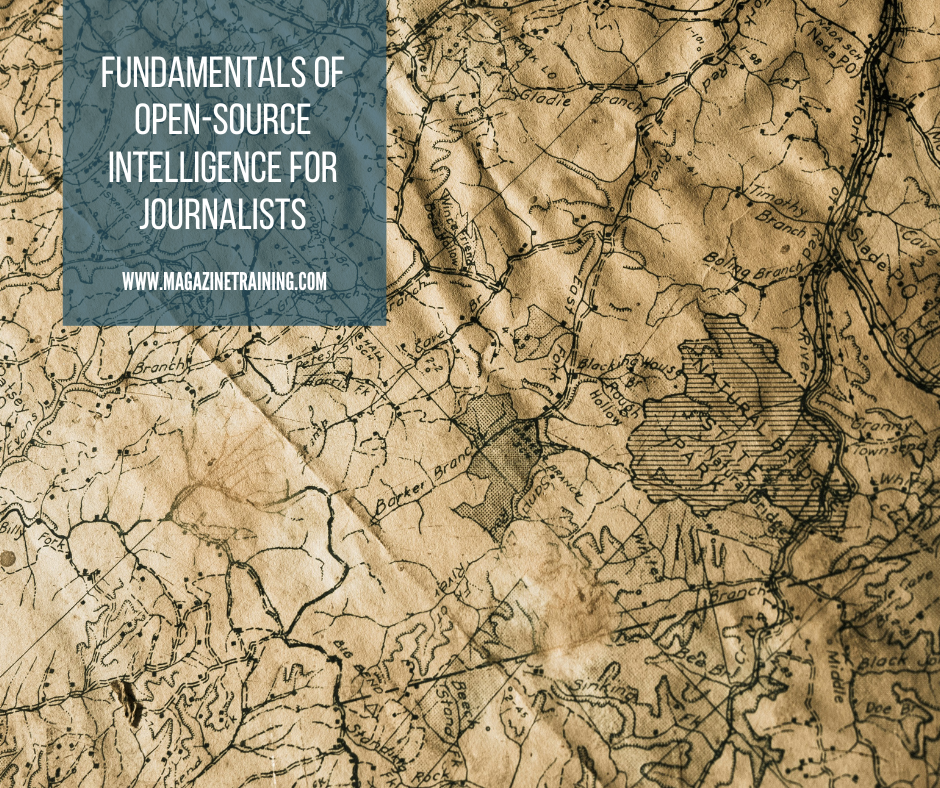
Open-source intelligence (OSINT) – the gathering and analysis of publicly available information found on social media, and in databases and government records – can be invaluable in situations when information is sparse, controlled or censored. Journalists today leverage OSINT to expose corruption, investigate war crimes and crimes against humanity, and hold governments and other powerful actors to account.
The investigative journalism group Bellingcat has pioneered the use of OSINT in its cutting-edge reporting over the years. The outlet’s journalists have used OSINT to uncover Russia’s involvement in the 2014 downing of Malaysian Flight MH17 over Ukraine, provide critical evidence of the Syrian government’s use of chemical weapons against civilians, and revealed the massacre of civilians by Cameroonian soldiers in 2020, among other investigations.
“We’ve uncovered and verified lots of potential war crimes, […] spy networks, state-backed assassination teams, the movements and activities of drug cartel leaders, […] and sanctions breaches by the likes of Russia, Iran and many, many more,” said Bellingcat’s lead editor, Eoghan Macguire, during a recent IJNet Crisis Reporting Forum session.
Macguire outlined how Bellingcat has used OSINT to support its investigations across Africa, and he provided key tools and resources for journalists interested in using OSINT in their own investigative reporting.
Using OSINT to identify war crimes
In his presentation, Macguire detailed how his team investigated alleged war crimes in Ethiopia’s Tigray region during the Tigray war, which lasted from November 2020 until November 2022. During what was a civil war, the Ethiopian government and its allies fought against the Tigray People’s Liberation Front.
Bellingcat reporters began their investigation in March 2021 when graphic videos purportedly depicting the execution of civilians by Ethiopian soldiers surfaced on social media. “Even though these were tough videos to watch, they contained clues that allowed us to verify crucial details,” said Macguire.
Bellingcat investigators analyzed the shadows cast in the footage to deduce the time of day the videos were filmed, and the team used PeakVisor, an app originally designed for mountaineers, to determine the location where the videos were filmed.
An alternative to Google Maps, which offers only limited detail in rural areas, explained Macguire, PeakVisor provided valuable topographic information that Bellingcat’s journalists could identify in the videos, such as ridges and plateaus. They then compared these features against satellite imagery from Google Earth to identify the location of the massacre: a village known as Mahbere Dego in the Tigray region.
To identify the perpetrators of the massacre, Bellingcat examined the language spoken in the videos and the uniforms being worn. “Using independent translators, we established that the soldiers were speaking Amharic, indicating they were not from the Tigray region,” Macguire said. This led to the conclusion that they were likely members of the Ethiopian military.
Ultimately, in collaboration with Newsy and BBC Africa Eye, Bellingcat reported that the executions were carried out by Ethiopian forces. “It was important information to put out,” MacGuire stressed, noting that other major news organizations including CNN later corroborated their results using similar methods.
Tools of the trade
Crucially, many of the tools employed in the investigation, including Google Earth, Natural Earth, and PeakVisor, were free. “You don’t have to be a tech wizard or spend lots of money to conduct open-source investigations,” Macguire noted. “With simple online tools, we were able to do something really powerful.”
In another example, Bellingcat utilized open-source software to track and document the movement of ships to shed light on illicit grain trade originating from the Russian-occupied territories of Ukraine. The investigation highlighted how one ship, the Zafar, engaged in ship-to-ship transfers of grain at sea, obscuring the origins of the sanctioned grain, and later integrated the grain into the global market.
by
Photo by Nik Shuliahin 💛💙 on Unsplash
Related posts
Magazine Training International’s mission is to encourage, strengthen, and provide training and resources to Christian magazine publishers as they seek to build the church and reach their societies for Christ.

